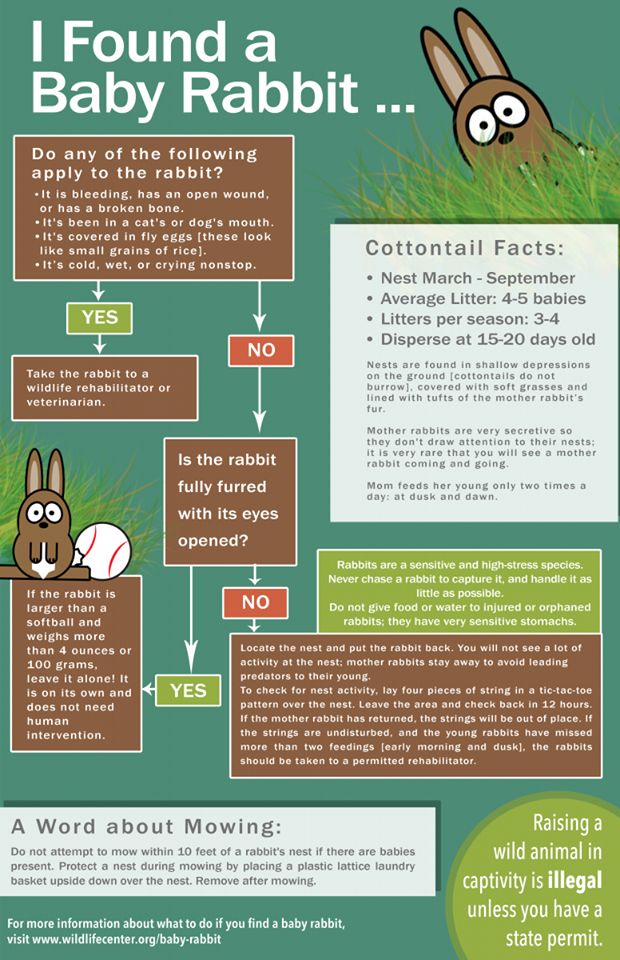What to feed orphaned baby mice
How to Take Care of Baby Mice
By Lee Parker | Updated September 26, 2017Caring for orphaned baby mice is not easy; many infant mice don't make it through the first week due to heat loss, lack of nutrition or sickness. If the baby mouse is a pinkie; that is, without any fur, raising him to adulthood is difficult, but not impossible. With feedings every one to two hours and plenty of warmth, he has a decent chance of survival.
Supplies to Have on Hand
Being prepared is the first step in the successful raising of an orphaned baby mouse. Items to have on hand include Pedialyte, a small syringe, a heating pad or hot water bottle and soft nesting material such as old T-shirts, blankets and small stuffed animals. Puppy milk replacement, found at most pet food stores, is also important, as this is the closest option to mouse milk available.
Where to Start
Inspect the baby mouse first for any wounds or signs of illness such as blood around the nose, or labored breathing. You also will need to stimulate the baby mouse to go to the bathroom; he cannot do this on his own. Mimic the mother's natural way of licking his genitals by using a damp cotton swap, or the tip of your finger. You will need to do this after every feeding until the baby mouse is able to void on his own.
Full Bellies Are Important
Feed the baby mouse by filling a small 1 cubic centimeter syringe with puppy milk replacement and slowly administering it into his mouth. Be careful not to press too hard on the syringe or the mouse will aspirate; you will see milk come from his nose. Position the baby mouse upright and belly down for his feedings. For the first three feedings, dilute the puppy milk replacement with a little water and watch for diarrhea. If the stools are mustard yellow, everything is normal.
Warm Nests Make Happy Babies
When using a heating pad for your baby mouse, never place the mouse directly on the pad and always keep the pad setting on low. A too-warm pad can dehydrate a baby mouse quickly. If he has other orphaned siblings, keep all the baby mice together and ensure one does not wander off on his own. Fill the mouse's enclosure with plenty of bedding, both under and above the baby mouse. Do not cover the mouse in an airtight container, but do keep him under wraps to trap heat.
A too-warm pad can dehydrate a baby mouse quickly. If he has other orphaned siblings, keep all the baby mice together and ensure one does not wander off on his own. Fill the mouse's enclosure with plenty of bedding, both under and above the baby mouse. Do not cover the mouse in an airtight container, but do keep him under wraps to trap heat.
Tips and Tricks
Warm the formula for the baby mouse by placing it in warm tap water for a few minutes. The baby mouse will indicate when it is full, but a helpful trick for expected formula amounts is to weigh him first. The mouse's weight in grams, divided in half, equals the amount of cc's he should be eating. If the mouse refuses to drink, try using Pedialyte before attempting formula again.
References
- The Fun Mouse: Orphaned Mice
- Rat and Mouse Club of America: Orphaned Rats and Mice
- Rat Fan Club: Raising Orphaned Rats and Mice
- Fancy Mice: Baby Care
- The Complete Care of Baby Animals: Expert Advice on Raising Orphaned, Adopted or Newly Bought Kittens, Puppies, Foals, Lambs, Chicks and More; C.
 E. Spaulding, Jackie Clay
E. Spaulding, Jackie Clay
Photo Credits
What Do Baby Mice Eat?
As an Amazon Associate I earn from qualifying purchases.
It’s not easy to care for abandoned newborn mice; many newborn mice die in the first week owing to heat loss, nutritional deficiency, or disease. Raising baby mice is difficult since it has no fur but it isn’t impossible. It has a reasonable possibility of survival if fed several times each day and given enough warmth.
What comes to mind when you hear the term “mouse”? This may be the kind of small, grey animal with a chunk of yellow cheese in its paws that many people are familiar with. A mouse could also be running around your home, opening cereal boxes.
This is why it’s important to be aware of what baby mice eat in the wild. It will assist you in learning how to keep these pests out of your home. So, let’s look at what baby mice eat in the wild and how our homes have become attractive dining halls for mice.
What Do Baby Mice Eat?Baby mice will suck on their mother’s milk for the first two weeks of their life. After that, baby mice can start eating solid foods, such as cooked rice and beans, cooked carrots, soft vegetables, and fruits.
After that, baby mice can start eating solid foods, such as cooked rice and beans, cooked carrots, soft vegetables, and fruits.
If they are still without parents, give them kitten milk formula with a syringe or pipet. Remember to feed them every two or three hours. This may mean getting up at night, but it is necessary if you want to keep the kittens alive.
The newborn mice will not have developed their teeth, so they won’t be able to chew on the food at first. After three or four weeks, you should consider adding some solid meals. When the mice begin opening their eyes and growing, this is one of the signals that it’s time to exterminate them. You should also note when their teeth begin to develop.
Begin by offering them high-quality, nutritious foods to encourage growth. Fruits, seeds, vegetables, greens, and rodent diets are examples of these items.
What Do Baby Mice Eat in The Wild? A Baby MouseMice are not picky. A mouse’s diet is surprisingly broad, and a mouse will do just about anything to get its hands on it.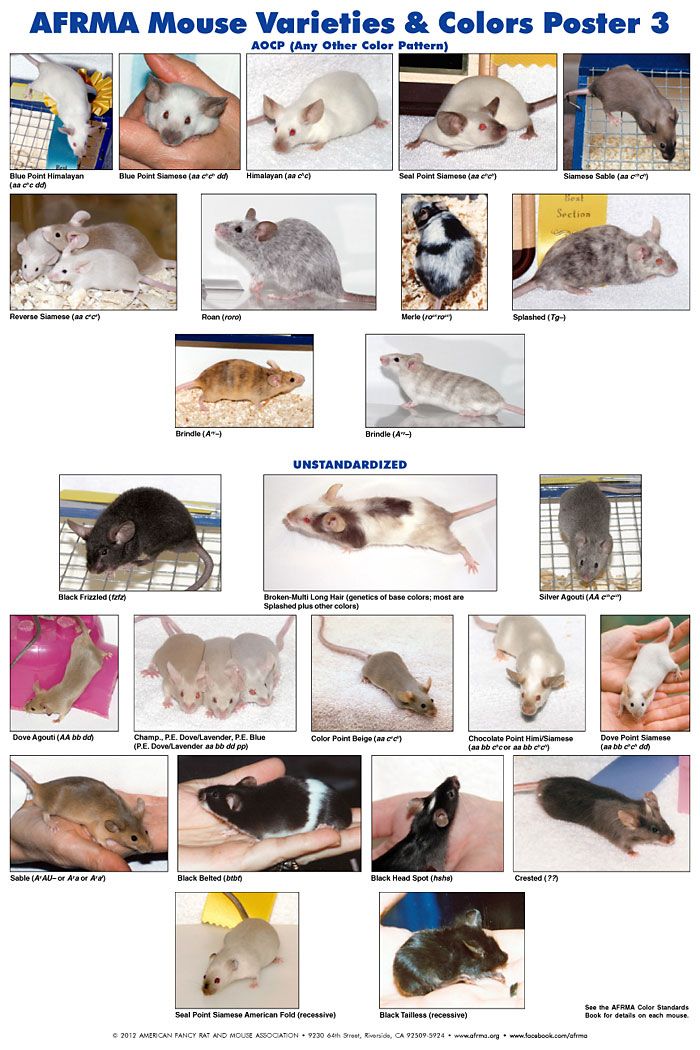 They’re natural foragers who enjoy consuming a wide range of foods in the wild. Although they have their likes and dislikes, they do have certain tendencies.
They’re natural foragers who enjoy consuming a wide range of foods in the wild. Although they have their likes and dislikes, they do have certain tendencies.
Mice, like most other rodents, prefer insects to meat. These creatures will also consume smaller snails, larvae, centipedes, cricket eggs, and worms as a source of nutrition.
What Do Baby Mice Eat At Home? Cheese for Baby MiceMice, like in the wild, will take what they can get. While mice aren’t fussy eaters, they do have their favorite foods. Here’s a list of some of the things that mice enjoy eating.
You may be shocked to learn that mice dislike cheese more than other foods if you grew up watching cartoons of mice chewing on a massive slice of Swiss. That being said, a mouse would not leave an excellent chunk of cheese behind. They will still consume any cheese they discover.
Mice are omnivores, so they eat both plants and animals. They may munch on any leftovers or insects that they discover around your house.
Mice are curious animals, and their food preferences reflect this. Instead of consuming a large chunk of food all at once, they like to nibble on many different things they’ve kept.
Mice are also hoarding animals. They enjoy rummaging through cupboards and pantries, gathering what they find, and bringing it back to their nests when food is in short supply.
Not only is this an annoyance in and of itself, but it also attracts pests like beetles, weevils, and other insects. This food storage may attract additional pests such as cockroaches, ants, and mice, causing a simple mouse infestation to rapidly develop into a full-blown pest issue.
Mice are generally unwilling to eat non-food items. If chew impressions are on cables, cords, wires, boxes, fabric other objects, this is due to the existence of a mouse nest rather than food consumption.
How To Feed Baby Mice?Step 1:Give your baby mouse some liquid nourishment. Baby mice drink mother’s milk. Instead, you’ll need to give your newborn mouse the milk it needs. Cow’s milk should be avoided. You may, instead, try soy formula, kitten formula made of goat’s or cow’s milk, or goat’s milk baby formula.
Baby mice drink mother’s milk. Instead, you’ll need to give your newborn mouse the milk it needs. Cow’s milk should be avoided. You may, instead, try soy formula, kitten formula made of goat’s or cow’s milk, or goat’s milk baby formula.
Every two hours, give them a good meal. Your newborn mouse will require feeding around the clock until it opens its eyes. You must feed your newborn mice every two hours for those between 0 and 2 weeks old. They only need to eat every 3-4 hours after that. They shouldn’t eat during the night once their eyes are open.
Warm the milk first. Check a drop on your wrist to see if it’s cold or hot enough. Using a syringe, eyedropper, or pipette, add milk to a mouse. With your non-dominant hand, firmly grip the mouse. With your other hand, hold the pipette and try to shimmy the probe into the mouse’s mouth. Warm milk should be used instead of cold water. This resembles stretching out and squirming
Step 3:Solid foods should be introduced gradually after your mouse’s eyes are open. It may begin to eat solid food when its eyes are open. Continue feeding it formula until the 4 to 6 weeks old, at which point it will be weaned. Hamster or kitten food, baby food, or soft vegetables can all be offered.
It may begin to eat solid food when its eyes are open. Continue feeding it formula until the 4 to 6 weeks old, at which point it will be weaned. Hamster or kitten food, baby food, or soft vegetables can all be offered.
To help a mouse go to the toilet, stimulate it. Baby mice can’t urinate or feces on their own because they’re babies. The mother would generally lick them to encourage them to eliminate them. Place a cotton ball or your finger in lukewarm water and gently move it over the mouse’s genitals until it has eliminated itself.
What Are The Natural Predators of Baby Mice?What are the most dangerous animals for mice? While it is not uncommon for some of the larger tarantulas to consume a mouse, most spiders do not consider mice to be a common meal, and instead may appear on a mouse’s menu. Where a substantial amphibian may occasionally capture and consume a mouse, the bulk of their diet is composed of tiny animals, such as insects.
There are several animals that consume mice as part of their regular diet in order to maintain the rodents’ populations in check. These are the creatures believed to be the mouse’s natural predators, and they may be found across a variety of species.
Birds
Hawks, eagles, and owls consider mice a welcome change of pace to be hunted and snared. The heron, crow, and blue jay are non-raptor birds that will eat rodents if they find them.
Reptiles
Although larger lizards are known to consume mice, snakes are generally the primary food source for them. People who keep snakes as pets are aware of the snake’s preference for a rodent dinner, but they are more frequently provided with frozen rodents rather than live mice because of their personal preferences or fears that their pets will be injured by food trying to defend themselves.
Mammals
Cats are commonly thought of as the mouse’s greatest adversary, but once they’ve finished playing with them, house cats will not eat mice.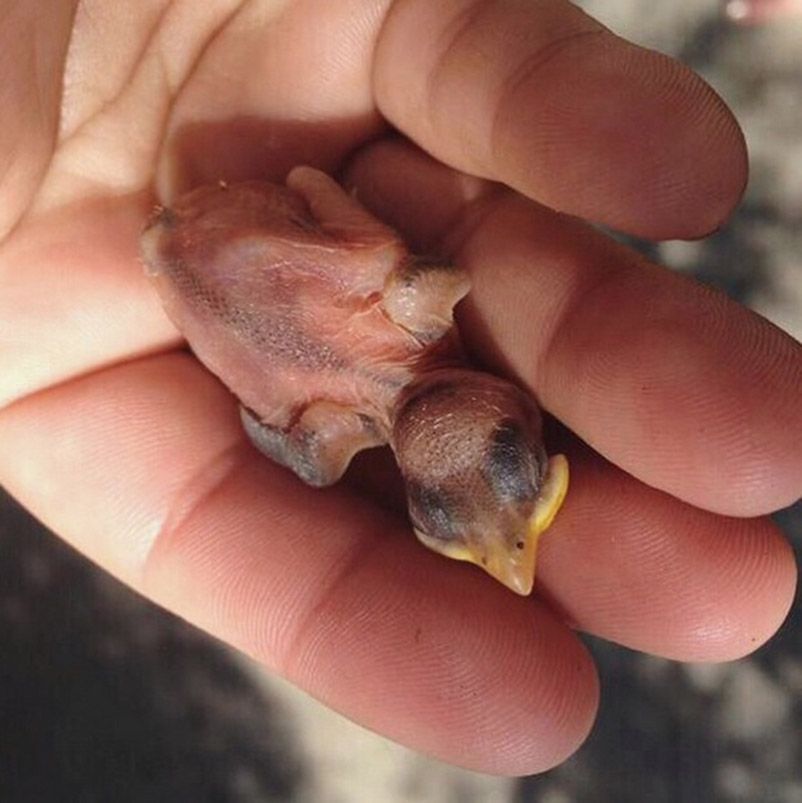 Their feral counterparts and wild cat relatives, however, actively seek out mice for food. Cats, like other species, will consume mice to fill their stomachs. Tigers, lions, and jaguars require more substantial meals, but they will still nibble on them to keep their hunger satisfied. Dogs are not as fussy about eating mice as cats are; nevertheless, they are just as ready to do so in order to survive.
Their feral counterparts and wild cat relatives, however, actively seek out mice for food. Cats, like other species, will consume mice to fill their stomachs. Tigers, lions, and jaguars require more substantial meals, but they will still nibble on them to keep their hunger satisfied. Dogs are not as fussy about eating mice as cats are; nevertheless, they are just as ready to do so in order to survive.
Humans
There is another rodent-eating creature that has been observed. It’s a mammal, but it differs from the others in several respects. This species differs from the other mammals listed above because it does not eat mice. Locals avoid members of these societies because they are located in certain countries and are often shunned by those from throughout the rest of the globe. The human is one of the mouse’s greatest foes, and it is a member of this distinctive species.
Humans, as a species, are perhaps the pickiest eaters on the food chain. Humans’ tastes have evolved to the point where we are repulsed by certain foods, particularly those that are known to be parasite-carrying plague transmitters.
Mice are eaten on a regular basis in certain areas of the world, where circumstances demand that food be acquired where it may be found. Though many of the countries that offer mice on their menu no longer struggle financially, traditional dishes are still served, albeit as cultural delicacies for visiting tourists with strong stomachs. In Vietnam, Korea, China, Zambia, and Malawi, rats are known to be eaten in many ways.
Are Baby Mice Healthy To Eat?Mice are now a trendy source of protein, according to the Austrian Times, having been proven that there’s nothing edible that hasn’t been transformed into a delicacy somewhere in the world. It should be prepared similarly to other meats, just in smaller mouse-sized portions.
It’s possible to eat sewer rats. While you can eliminate many of the pathogens by cooking at a high temperature, rodents still feed on waste and human/animal remains. It is possible to eat cooked rats, although doing so might cause various illnesses and even death if not properly done.
Amazon and the Amazon logo are trademarks of Amazon.com, Inc, or its affiliates.
How to care for orphaned puppies?
Puppies are considered orphaned if their mother died in childbirth, underwent a major operation, or is unable to care for her puppies due to lack of milk or any behavioral or psychological abnormalities. In some cases this can happen already when the puppies are a few weeks old.
The principles of caring for one orphaned puppy are the same as caring for the whole litter. In most of these cases, a whole litter has to be cared for. Caring for orphaned puppies in the absence of a mother is difficult, but if all the rules are followed, it allows you to save the life of the babies. When caring for orphaned puppies, attention should be paid to the following parameters: temperature, humidity, nutrition, hygiene, disease prevention and socialization.
Temperature. In order for puppies to be healthy, it is necessary to maintain a certain ambient temperature. Little puppies are not yet able to retain their body heat or shiver to create heat. The required temperature can be ensured by placing artificial heat sources near the arena with puppies: incandescent lamps, electric heaters, etc. It should be remembered that it is impossible to create too high a temperature so that the puppies do not overheat. To control the temperature, place a thermometer in the puppy kennel. During the first week of life, puppies need to provide a temperature of about 35-38°C. During the second week the temperature should be around 30°C. By the third week, puppies can already crawl and shiver, which helps them keep warm. At this age, the optimal temperature is about 24-29°C. Usually a simple 25 watt light bulb mounted on one side of the arena is sufficient for this. Install a thermometer under the light bulb to monitor the temperature. In the third week, puppies may crawl closer to the heat source or move away from it, looking for a comfortable temperature for themselves.
Little puppies are not yet able to retain their body heat or shiver to create heat. The required temperature can be ensured by placing artificial heat sources near the arena with puppies: incandescent lamps, electric heaters, etc. It should be remembered that it is impossible to create too high a temperature so that the puppies do not overheat. To control the temperature, place a thermometer in the puppy kennel. During the first week of life, puppies need to provide a temperature of about 35-38°C. During the second week the temperature should be around 30°C. By the third week, puppies can already crawl and shiver, which helps them keep warm. At this age, the optimal temperature is about 24-29°C. Usually a simple 25 watt light bulb mounted on one side of the arena is sufficient for this. Install a thermometer under the light bulb to monitor the temperature. In the third week, puppies may crawl closer to the heat source or move away from it, looking for a comfortable temperature for themselves.
Humidity. As a rule, artificial heat sources dry the air. You should create a level of humidity that is comfortable for humans. To do this, you can place a wet towel in the arena. Remember not to create too high humidity, as it leads to various diseases, in particular respiratory infections.
Food. Providing puppies with the right nutrition is very important for their health. Commercial bitch milk substitutes are available in pet stores that are fully balanced and meet all the needs of orphaned puppies . But you can make milk yourself. True, its composition will not be ideal, but such milk can be used for several days, until it becomes possible to purchase special milk in the store. Esbilac and Puppylac are among the best known brands of mother milk substitutes.
The recipe for homemade milk is as follows: 1 cup whole milk (cow or goat), 1 pinch table salt, 3 egg yolks (no protein), 1 tablespoon corn oil, 1/4 teaspoon liquid vitamins.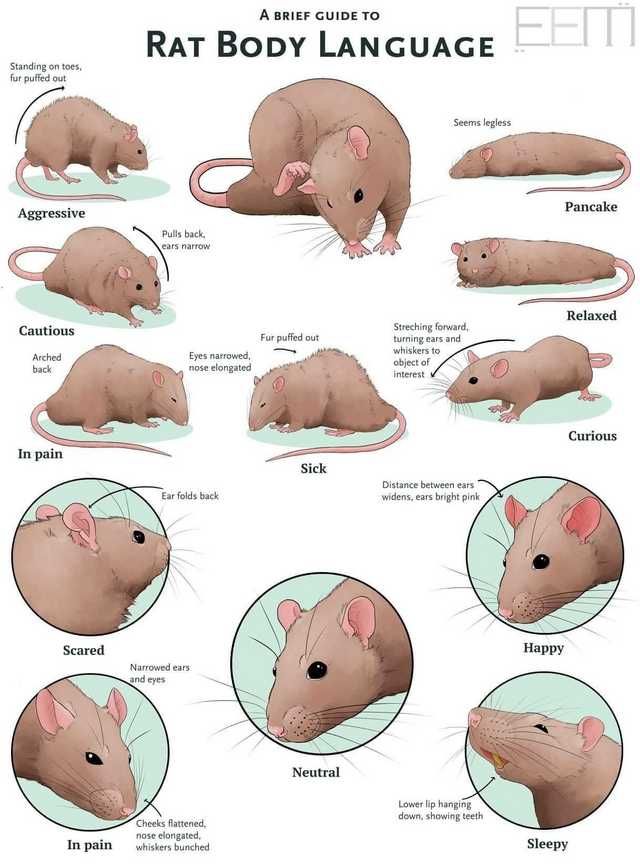 Blend until smooth and serve to puppies warmed to 35-38°C.
Blend until smooth and serve to puppies warmed to 35-38°C.
Puppies can be fed milk from a bottle with a nipple or through a special tube that goes through the mouth into the stomach. It is best to use bottles. Puppies are fed through the tube only with the help of a specialist, since there is a danger of injuring the lungs and causing suffocation. Tube feeding is essential for puppies who are unable to feed normally. Puppies should be fed when they lie on their tummies, not on their backs.
During the first four weeks of life, most puppies are fed only milk, which is heated to 35°C before feeding. After three weeks of age, milk can be warmed to room temperature. Puppies less than a week old are fed every two hours. Between the ages of seven and fourteen days, increase the interval between feedings to four hours. At two weeks of age, most puppies can be left overnight for eight hours without feeding, and during the daytime feed every two hours. At four weeks of age, most puppies can be fed at four to six hour intervals.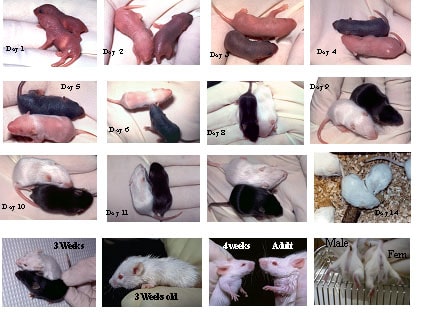 During the first four weeks of life, feeding consists only of milk for the above time intervals. The amount of milk depends on the individual puppy, but in general it is believed that a puppy weighing 250-300 g consumes approximately 30 ml of milk per day. Most milk substitutes contain approximately 60 calories per 30ml of milk, so a 250-300g puppy will consume approximately 30 calories per day.
During the first four weeks of life, feeding consists only of milk for the above time intervals. The amount of milk depends on the individual puppy, but in general it is believed that a puppy weighing 250-300 g consumes approximately 30 ml of milk per day. Most milk substitutes contain approximately 60 calories per 30ml of milk, so a 250-300g puppy will consume approximately 30 calories per day.
After four weeks of age, puppies can already drink milk from a saucer. At this age, it is recommended to add dry or canned food to milk. Mix puppy food with milk until you get a mixture that has the consistency of pea soup. Over the next three weeks, more dry food is added and milk is reduced until the puppies are seven weeks old. At this age, they should switch to dry food completely and eat exactly the same as normal, non-orphaned puppies. From two weeks of age to a year, special vitamins for puppies should be added to milk, and then to dry food.
Hygiene. A newborn puppy is unable to urinate or defecate on its own because it lacks the necessary muscle control to do so.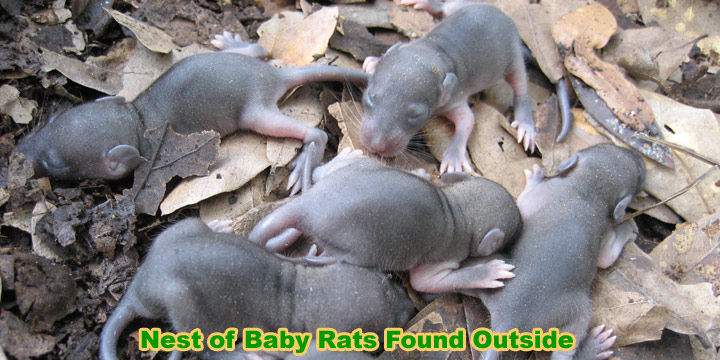 Therefore, puppies should be encouraged to empty their bladder and bowels. This duty is usually performed by their mother. It licks the genital area and thereby stimulates the emptying of the bladder and intestines. Orphaned puppies should be manually stimulated for this purpose after each feeding. This is a fairly simple procedure using a piece of cotton wool or a soft towel, which are moistened with water and the genital area is wiped with their help. After that, within one to two minutes, the puppy empties the bladder and intestines. Usually such a procedure is necessary until 21 days of age. Most puppies are able to go to the toilet on their own at the age of three weeks.
Therefore, puppies should be encouraged to empty their bladder and bowels. This duty is usually performed by their mother. It licks the genital area and thereby stimulates the emptying of the bladder and intestines. Orphaned puppies should be manually stimulated for this purpose after each feeding. This is a fairly simple procedure using a piece of cotton wool or a soft towel, which are moistened with water and the genital area is wiped with their help. After that, within one to two minutes, the puppy empties the bladder and intestines. Usually such a procedure is necessary until 21 days of age. Most puppies are able to go to the toilet on their own at the age of three weeks.
Puppies should be cleaned after each feeding. Carefully observe their secretions to recognize the first signs of ill health. Urine should be pale yellow or clear. If it is dark yellow or orange, then the puppy is not getting enough food. Do not feed a large amount of milk at one time, it is better to do this more often.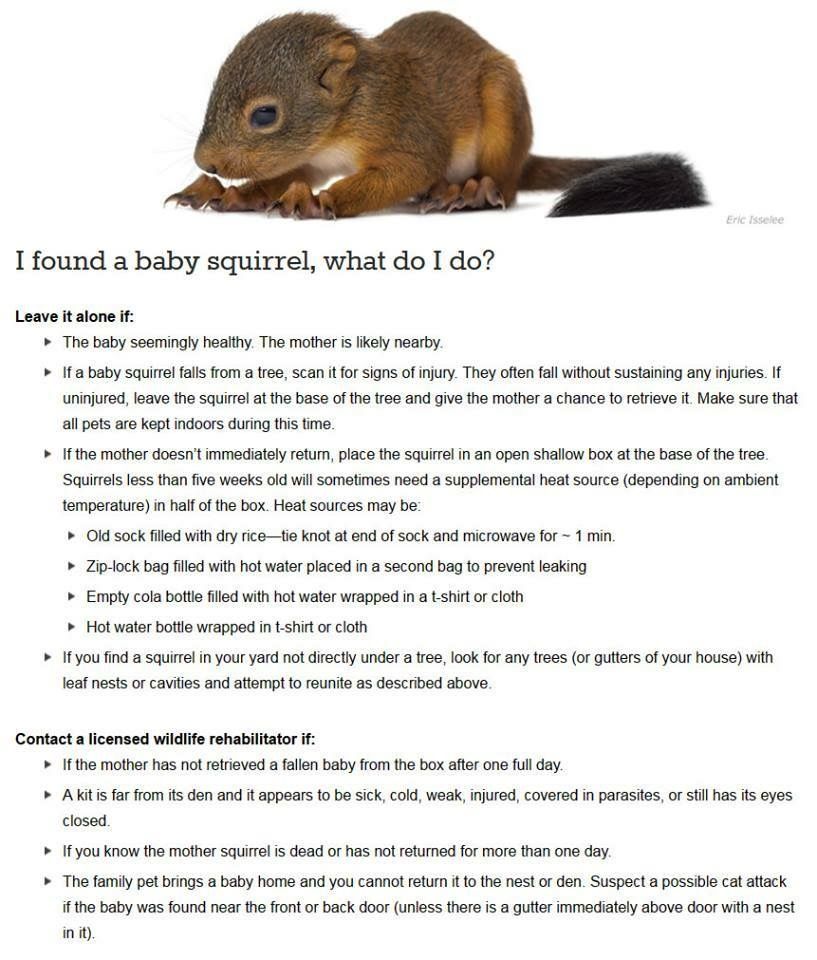 The stool should be light brown to dark brown and partially formed. Green stools indicate an infection, while stools that are too hard indicate poor milk composition. If the stool is too hard, feed the puppy more frequently rather than increasing the amount of milk at one time as this can cause bloating, gas, spitting up, etc.
The stool should be light brown to dark brown and partially formed. Green stools indicate an infection, while stools that are too hard indicate poor milk composition. If the stool is too hard, feed the puppy more frequently rather than increasing the amount of milk at one time as this can cause bloating, gas, spitting up, etc.
Puppies should be weighed daily to monitor their development. This helps to compare littermates with each other and identify those who are lagging behind in development. Use a medical scale for babies or other very accurate scales for this. In relation to the weight of puppies, there are no specific standards, since the weight varies depending on the breed. Weighing will only compare puppies within the same litter.
Disease prevention. Many orphaned puppies are at higher risk of developing various infections such as parvovirus enteritis due to the fact that they do not receive mother's milk, which during the first 24 hours after birth is especially rich in maternal antibodies. This milk is called colostrum. It contains antibodies that help puppies protect themselves from many diseases. Puppies deprived of their mother's milk do not have good immunity. Because of this, veterinarians recommend giving orphaned puppies their first shots at four weeks of age, rather than six weeks old as normal puppies.
This milk is called colostrum. It contains antibodies that help puppies protect themselves from many diseases. Puppies deprived of their mother's milk do not have good immunity. Because of this, veterinarians recommend giving orphaned puppies their first shots at four weeks of age, rather than six weeks old as normal puppies.
Orphaned puppies should be given anthelmintics in the same way as normal puppies. They are usually given at four weeks of age.
Socialization. It is very important for orphaned puppies to have contact with family members at 5-6 weeks of age. It should be remembered that puppies are still very small, so they should be handled with extreme care. You should gradually accustom puppies to home sounds, to new people and pets. Early socialization will help your puppy avoid many problems in the future.
Did you find caring for orphaned puppies too difficult? Don't worry, there are plenty of great books out there detailing how to do it the right way, plus you can always take advice from experienced breeders and veterinarians. Do not be afraid of difficulties! A beautiful, healthy puppy that you could raise yourself will be a real reward for you!
Do not be afraid of difficulties! A beautiful, healthy puppy that you could raise yourself will be a real reward for you!
Copyright holder portal Zooclub (www.zooclub.ru)
When reprinting this article, an active link to the source is OBLIGATORY.
Tags: dogs, breeding dogs, puppies, raising a puppy, dog care
Feeding an orphaned guinea pig baby
Guinea pig babies have an advantage over other cubs - their mothers have a fairly long gestation period and babies are born well formed, have thick fur, teeth and can be relatively independent. Having been born and dried, they can move well and, from the first days, in addition to mother's milk, eat "adult" food.
Undoubtedly, it is best for cubs with their mother, with her milk they receive the antibodies necessary for health, from her examples they learn how and what to eat, using her feces, populate their intestines with beneficial microflora, during the first week, mother licks them, especially carefully in the area of \u200b\u200bthe “butt”, thus stimulating defecation and urination, babies warm themselves under their mother’s barrel, follow her in single file, learn to communicate, etc.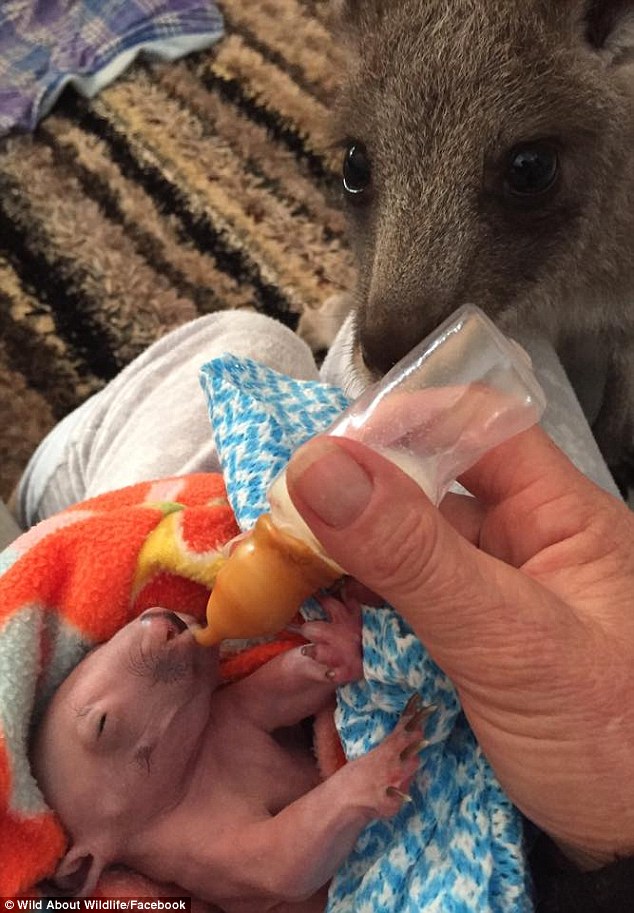 Therefore, if the cubs are orphaned for some reason, try to find a foster mother for them. Usually, a guinea pig gives birth to one to four cubs, and a healthy mother pig, who has recently given birth to one or two babies, may well feed and leave a couple more orphans.
Therefore, if the cubs are orphaned for some reason, try to find a foster mother for them. Usually, a guinea pig gives birth to one to four cubs, and a healthy mother pig, who has recently given birth to one or two babies, may well feed and leave a couple more orphans.
Food for nursing mothers and babies should be of very good quality - selected hay with a high calcium content, without sharp inclusions, branded granules with a special mark for young animals, always fresh clean drinking water, when the cubs grow up, they are gradually accustomed to green food, vegetables and fruits (fruits are given to pigs quite a bit, as a treat).
If the cubs have lost their mother or there is a weaker baby in the multiple litter, and the nurse could not be found, you will have to take care of feeding and caring for the little guinea pigs.
First of all, you need to get a scale to adequately assess whether the babies are gaining weight well, whether the diet suits them. They should be weighed immediately after birth and monitored daily for at least a week.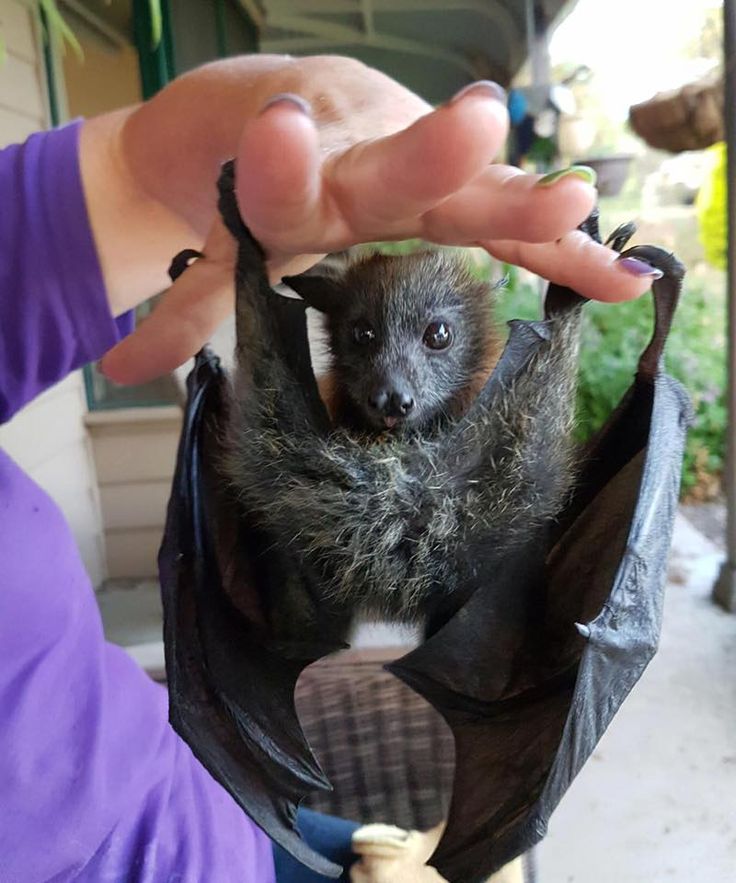 As a rule, during the first two days, babies lose a little weight, and from the third day they begin to gain it.
As a rule, during the first two days, babies lose a little weight, and from the third day they begin to gain it.
The next thing owners who act as foster mothers to newborn guinea pigs should know is that their pets do not need to be supplemented with any kind of milk or milk substitutes. They can only mother's milk, no other is suitable for them and is prohibited.
If you are unable to purchase special food for hand-feeding guinea pigs, you should use hay, regular pellets, pressed hay pellets, alfalfa, high in calcium, soaked in warm water, or left overnight to soak in the refrigerator, and in the morning crushed with a spoon and heated to room temperature, or ground in a coffee grinder (ground in a mortar with a pestle) with hay, and then stirred with liquid. You can add a small amount of boiled pumpkin or baby pumpkin puree without additional sugar and cream.
At first, babies should be fed every 1-2 hours, at least every 3 hours, feeding no more than 1-2 cm³ of food at a time.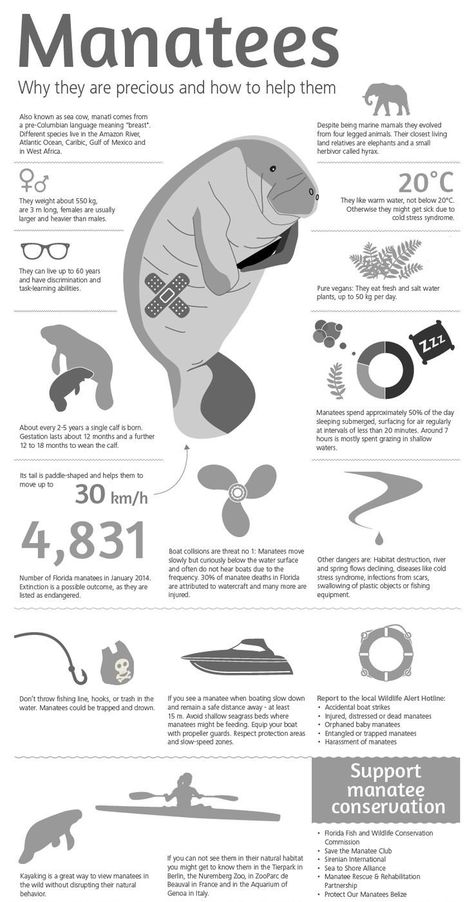 After each feeding, the baby should be given some water to drink, sometimes with vitamin C or a rehydron solution.
After each feeding, the baby should be given some water to drink, sometimes with vitamin C or a rehydron solution.
Some babies learn to spoon feed and some need to be syringe fed (see Anorexia in Guinea Pigs). When feeding and drinking from a syringe, make sure that the babies do not choke, the ingress of liquid or food into the respiratory tract can cause aspiration pneumonia, which is likely to lead to the death of the animal. Therefore, act calmly and slowly, comfortably seated with the baby. Make sure your baby stays clean and dry after feeding.
For the first 1-2 weeks after each feeding, small guinea pigs should definitely stimulate digestion, defecation and urination by gently massaging the “buttocks” and gently stroking the bottom of the tummy, for this you can use a slightly damp warm towel.
For seeding the intestines of babies with beneficial microflora, the feces of a healthy guinea pig are most suitable, which should be stirred with a small amount of water and added to the “feed porridge”. Cubs will benefit from communication with their dad or older siblings if they are healthy and not aggressive. If necessary, the veterinarian will prescribe special preparations for the development of beneficial flora for babies.
Cubs will benefit from communication with their dad or older siblings if they are healthy and not aggressive. If necessary, the veterinarian will prescribe special preparations for the development of beneficial flora for babies.
Babies should always have fresh hay, pellets, green leafy vegetables, grass, water in their home to encourage them to eat on their own.
If you just need to support a weaker baby from a multiple litter, it is useful to leave him alone with his mother several times a day, taking the larger babies for 15-20 minutes.
Lonely and weak cubs will need an additional source of warmth. Using an incandescent lamp for heating, make sure that the baby does not overheat and can, if necessary, hide in a cool corner. And when using various heating pads, make sure that they are not chewed (especially chemical and electrical).
Additional administration of vitamins or medicinal preparations should be consulted with a veterinarian ratologist in each specific case.